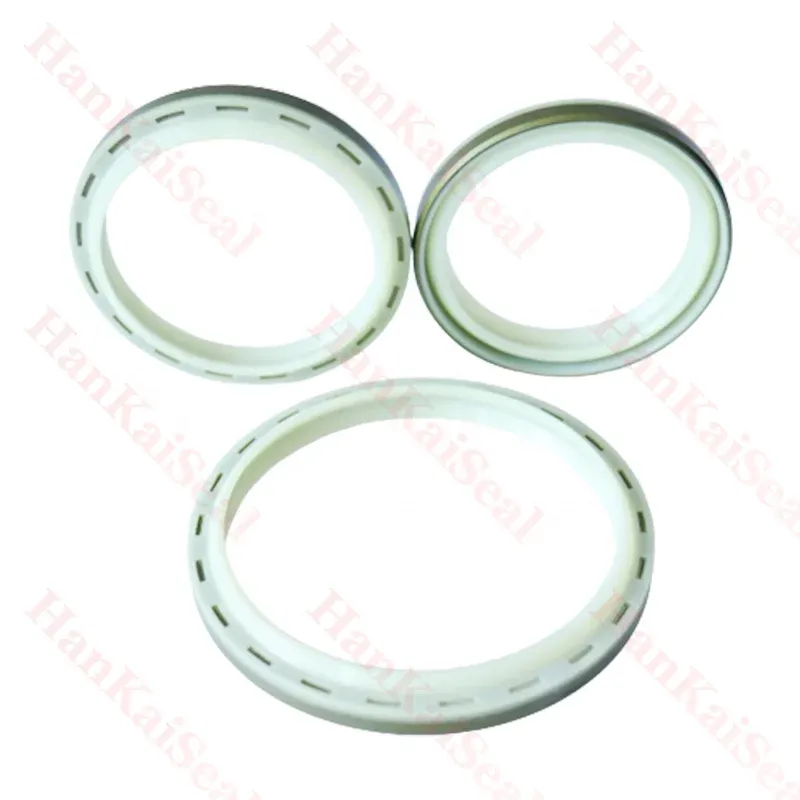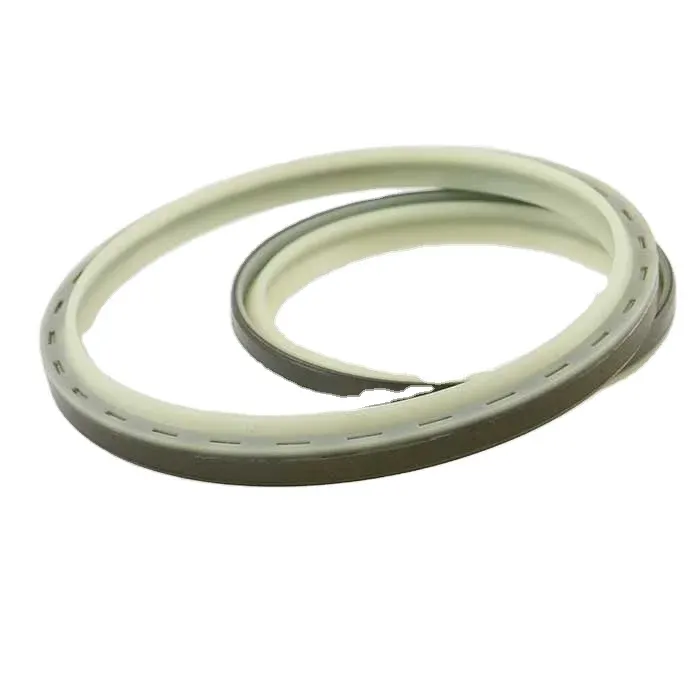Dust Oil Seal
A dust seal is an essential component in maintaining the performance and longevity of machinery by effectively preventing the ingress of dust, dirt, and other contaminants. One of the primary advantages of a dust proof seal is its ability to protect critical internal parts, such as bearings and shafts, from harmful debris. By offering dust proof sealing, these seals help maintain the integrity of moving parts, reducing friction, wear, and the risk of mechanical failure. This is especially important in heavy-duty machinery, automotive applications, and hydraulic systems where continuous operation is vital.
The bearing dust seal plays a crucial role in safeguarding bearings by ensuring that contaminants do not enter the bearing assembly, thus extending its life and maintaining smooth rotation. In addition, the dust lip seal is designed to provide an additional layer of protection, particularly in environments exposed to high levels of dust or dirt. This seal creates a barrier that prevents the entry of external particles while allowing the internal lubrication to remain intact, which is critical for reducing friction and ensuring optimal performance.
Moreover, dust sealing systems are cost-effective, as they help reduce downtime and maintenance costs. Regular maintenance and replacement of seal dust can significantly extend the lifespan of machinery and prevent costly repairs. Whether used in industrial equipment, automotive parts, or hydraulic systems, dust seals provide an efficient and reliable solution to keep machines running smoothly by preventing the buildup of dust and debris. Their simple yet effective design makes them a crucial element in maintaining operational efficiency and minimizing the impact of contaminants in mechanical systems.
-

-

Standard Hydraulic Dustproof Wiper 70×84×8/11.3 DWIR Oil Seal
-

DKBZ 90×104×8/11 Standard Hydraulic Dustproof Wiper Oil Seal
-

-

-

-

-

-

-

DWIR 80×94×8/11.3 Standard Hydraulic Dustproof Wiper Oil Seal
-

-

Choosing the Right Dust Seal for Your Industrial Equipment
Selecting the appropriate dust seal for your industrial equipment is crucial to ensuring optimal performance and protecting your machinery from contaminants that can lead to costly downtime and repairs. The right seal helps maintain smooth operation by preventing the ingress of dust, dirt, and other debris into sensitive parts, such as bearings, shafts, and hydraulic systems. To choose the best dust proof seal, several factors must be considered, including the environment, the type of equipment, and the specific performance requirements.
1. Type of Equipment and Application The first step in selecting a dust seal is to consider the specific application. For example, if you’re dealing with high-speed machinery or rotating parts, a bearing dust seal may be necessary to protect bearings from dust and debris, ensuring smooth rotation and preventing wear. For hydraulic systems, a dust lip seal may be ideal due to its ability to prevent contamination while maintaining the necessary lubrication within the system. Each seal type is designed to meet the unique demands of different machinery, so understanding the application is key.
2. Operating Environment The environment in which the equipment operates plays a significant role in determining the best type of dust sealing. If the machinery is exposed to harsh conditions, such as high levels of dust, moisture, or extreme temperatures, a dust proof sealing solution with enhanced durability and resistance to environmental factors is needed. In more controlled environments, a standard dust seal may suffice, but it’s essential to assess the potential risks and requirements based on operating conditions.
3. Material Compatibility The materials used in the construction of the dust seal are another important consideration. Seals made from rubber, polyurethane, or synthetic materials are commonly used in industrial equipment, but the material must be compatible with the chemicals, oils, or lubricants in the equipment. For example, a seal dust made from a high-performance elastomer can withstand oil or water-based lubricants, while a dust proof seal for an automotive application might need to resist high temperatures or UV exposure.
4. Durability and Maintenance Lastly, durability and ease of maintenance are critical factors when choosing a dust proof seal. Look for seals that offer long-lasting performance and are easy to replace or service when needed. Some seals are designed to be more resilient, requiring less frequent maintenance, while others may need regular checking to ensure they are performing optimally.
By considering these factors, you can choose the right dust seal that fits the specific needs of your industrial equipment, protecting it from contaminants and ensuring it operates efficiently over time.
What is the Purpose of a Dust Proof Seal?
The primary purpose of a dust-proof seal is to protect sensitive components in machinery and equipment from the damaging effects of dust, dirt, and other contaminants. These seals are critical in preventing external particles from entering moving parts such as bearings, shafts, and hydraulic systems, which can lead to excessive wear, reduced efficiency, and costly downtime. By keeping harmful debris out, a dust proof seal plays a vital role in prolonging the lifespan of equipment and ensuring its reliable performance.
1. Protecting Moving Parts One of the most important functions of a dust proof seal is safeguarding moving parts such as bearings, pistons, and shafts from dust and debris. When dust enters these components, it can cause friction, accelerate wear, and increase the likelihood of failure. A dust proof seal effectively blocks the entry of these contaminants, reducing the risk of damage and maintaining smooth movement within the system.
2. Reducing Maintenance and Downtime By preventing the infiltration of dust and dirt, a dust sealing system helps minimize the need for frequent maintenance and repairs. Dust can clog lubrication systems, leading to overheating, corrosion, and ultimately, component failure. With the right seal in place, machinery can continue operating at peak efficiency without the constant need for cleaning, repairs, or part replacements. This reduces both maintenance costs and downtime, improving the overall productivity of the equipment.
3. Maintaining Lubrication Integrity Many machines rely on lubrication to reduce friction and ensure smooth operation. A dust lip seal or other dust sealing solutions help maintain the integrity of the lubrication system by keeping dust and debris from contaminating the oil or grease. This helps ensure that internal components remain adequately lubricated, reducing friction and wear while enhancing the overall efficiency and longevity of the machinery.
4. Enhancing Equipment Longevity The long-term durability of industrial equipment relies heavily on protecting its internal components from environmental factors such as dust, moisture, and debris. A dust proof seal serves as the first line of defense, ensuring that these factors do not compromise the machine's performance or structural integrity. By extending the lifespan of machinery, these seals help businesses reduce replacement costs and ensure continuous operation.
5. Improving Performance in Harsh Environments In industries such as construction, mining, or agriculture, machinery is often exposed to challenging environments with high levels of dust, dirt, and other contaminants. A bearing dust seal or similar dust proof sealing solution is designed to withstand these harsh conditions, ensuring that machinery operates efficiently even in the most demanding environments.
Dust Seal vs. Oil Seal
When it comes to sealing applications in industrial machinery, understanding the difference between a dust seal and an oil seal is essential for ensuring proper maintenance and function. While both serve to protect equipment, they are designed for distinct purposes and operate in different ways. Below, we break down the key differences between dust seals and oil seals.
1. Purpose and Function
Dust Seal: A dust seal is primarily designed to prevent dust, dirt, and other external contaminants from entering machinery. It helps protect sensitive components, such as bearings and shafts, from abrasive particles that could cause wear and damage. Dust seals are especially important in environments where machinery is exposed to high levels of particulate matter, such as construction sites, mining operations, or agricultural settings.
Oil Seal: In contrast, an oil seal is designed to contain lubricants or oils within a system while preventing the escape of these substances. Its primary function is to maintain the integrity of the lubrication system by sealing the oil inside the machinery and ensuring it doesn't leak out. Oil seals are commonly used in rotating shafts, gearboxes, pumps, and other systems where lubrication is critical for smooth operation and to minimize friction.
2. Design and Materials
Dust Seal: A dust seal is typically made from a more rigid material, such as rubber or polyurethane, to effectively block larger debris like dirt and dust. It often features a simple lip design, which helps it create a barrier against contaminants without compromising the movement of the components.
Oil Seal: An oil seal, on the other hand, is designed with a more complex structure to handle both sealing oil and accommodating the pressure that builds up in a lubricated system. Oil seals often include a metal casing for added strength, along with a flexible sealing lip that maintains a tight seal against the shaft while withstanding the forces of oil pressure.
3. Pressure Handling
Dust Seal: Generally, dust seals do not need to handle high pressure. Their job is simply to keep dust and debris out, not to retain fluids under pressure. As a result, dust seals are less concerned with pressure containment and more focused on preventing contamination.
Oil Seal: Oil seals are designed to manage both pressure and lubrication. In hydraulic systems, for example, oil seals must withstand high internal pressures while preventing oil leakage. The sealing lip in an oil seal is designed to maintain a tight fit against the shaft, preventing fluid loss and ensuring optimal lubrication.
4. Applications
Dust Seal: Dust seals are commonly used in applications where the primary concern is to prevent external contamination from entering a system. These include use in bearings, hydraulic cylinders, and equipment exposed to dusty or dirty environments such as agricultural machinery, construction equipment, or automotive applications.
Oil Seal: Oil seals are used in applications where the retention of lubricants is critical. They are found in hydraulic cylinders, gearboxes, pumps, automotive engines, and any machinery that requires a sealed environment to retain oil and lubricants, preventing leaks and ensuring the system's smooth operation.
5. Maintenance and Durability
Dust Seal: Dust seals are relatively simple to maintain, and their durability largely depends on the type of dust and contaminants they are exposed to. In harsh environments, dust seals may require more frequent replacements as they wear down due to the accumulation of dust and debris.
Oil Seal: Oil seals are more durable and built to withstand higher pressures and temperatures. However, they may degrade over time due to the heat and pressure from the oils or lubricants they contain. Regular inspection is necessary to ensure that they maintain their sealing capabilities and prevent leaks.



